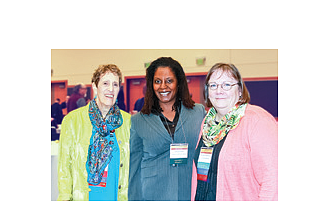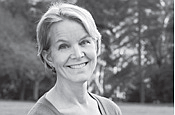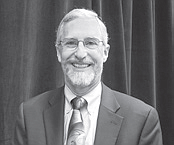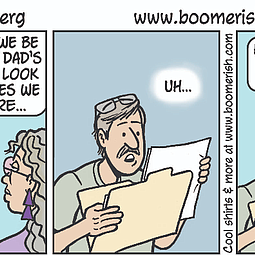Elder Friendly Futures
October 1, 2015 at 9:01 p.m.
Ann Hedreen is acutely aware of the importance of words in how humans experience emotion. She’s a filmmaker, teacher, blogger, podcaster – and daughter of a loving mother who died from Alzheimer’s disease in 2006.
For many years, senility was a euphemism for Alzheimer’s disease and dementia, she said. Old people were called batty or forgetful when actually many were living with a debilitating disease.
Hedreen was among three keynote speakers at the annual Elder Friendly Futures Conference, co-presented by the University of Washington Schools of Nursing and Social Work last month. The conference is designed to provide community partners, clinicians, caregivers and researchers the most leading-edge information and practice around aging in the United States.
Hedreen is not an academic or a clinician but her many professional abilities afforded her the ability to create art and meaning out of her mother’s illness and help others – clinicians and families – live with the disease.
“It is imperative that those working in the field of gerontology – community activists, researchers, clinicians, policy makers – come together and share their expertise so that older adults in our community may experience the best possible quality of life as they age,” said Dr. Barbara Cochrane, co-director of the de Tornyay Center for Healthy Aging and conference organizer.
“A lot of ideas bubble up as a result of this conference – both for presenters and conference attendees. The conference is a catalyst for friendly, supportive aging, and I relish being able to help our community recognize that older adults are a heterogeneous group with multiple visions for the future.”
Her Beautiful Brain, a memoir about Hedreen’s experience coping with her mother’s early-onset Alzheimer’s, has been nationally praised for its heartbreaking clarity and poignant portrayal of a bright and plucky mother who declines into the disease; the film, Quick Brown Fox: An Alzheimer’s Story, also about her mother’s decline and her subsequent caregiving, won numerous awards and was nominated for an Emmy.
“At the beginning, Mom actively fought language-generated stigma,” Hedreen told attendees at the UW Elder Friendly Futures Conference in September. “She always disliked the term ‘to pass away’ and preferred to say ‘he died.’ Later in life, at grocery stores, she would warn the cashier, ‘you have to be patient with me. I am living with Alzheimer’s disease and some things take me longer than they used to.”
Euphemisms contribute to a terrible and long-lasting stigma around Alzheimer’s and dementia, a stigma so strong that research has found even doctors don’t always tell their patients or patient’s family that they have been diagnosed with Alzheimer’s.
Hedreen told conference attendees that she noticed during writing and filmmaking that words like elder can either imply great respect (a village elder) or feebleness (the elderly). She said she liked how the UW’s Elder Friendly Futures Conference was pluralized.
“There are many futures for older adults, not just one,” she said.
Aging-Friendly Communities
Aging-friendly communities result from a confluence of successful physical and social elements, said keynote speaker Dr. Andrew E. Scharlach.
An aging-friendly community ensures that citizens are mobile, he added. This mobility can be achieved by installing and maintaining physical improvements, like railings to grasp and a floor area free of barriers. But mobility can also be achieved by the simple presence of an arm or hand to hold onto—or even just the watchful eye of a friend, child or caregiver.
A railing alone, no matter how sturdy, may not provide constant and proper mobility support, and a human presence is not always possible. “But together,” said Scharlach, “they contribute to an aging-friendly community.”
Scharlach, Professor of Aging at the Eugene and Rose Kleiner School of Social Welfare at UC Berkeley, has conducted extensive research about the physical and social contexts that make up aging-friendly communities. Aging-friendly communities can have a whole host of helpers, from visiting kids, to paid caregivers, to caring neighbors that pop in for shorter periods of time or ride along to doctor’s visits or grocery stores.
It is said that it takes a village to raise a child. “Well, it also takes a village to support an aging community,” he said.
Of course, fixing sidewalks, installing railings, shoring up public transportation and making homes fall-proof is important, but having an actual human to help can be the difference between feeling safer and feeling safe and valued, he said.
When working to improve a community for aging adults, Scharlach advised that asking older adults exactly what needs to be done to make them feel safe and happy shows that their opinion is valued and respected.
“The very first step for a community who wishes to become aging-friendly is to first compile the thoughts and requests of the oldest community members,” Scharlach said. “Eventually, people can begin to take those answers into account as they build new structures in the future so that the community is conceived with the eventuality that we will all need aging-friendly locations one day.”
Scharlach identifies other factors in addition to mobility that make an aging-friendly community: safety and security, accessibility and fulfillment, and psychosocial fulfillment and engagement. Transportation, as another example, is a key element in mobility, accessibility and psychosocial fulfillment.
“While many cities have initiatives to provide public transportation, such as Senior Services Transportation in Seattle,” Scharlach said. “The reality is that most people still get around by car, either driving or being driven.”
In-vehicle technologies for older adult drivers have helped make driving safer. But the presence of another able-bodied passenger in the vehicle—a caregiver, child, friend—can help older adults stay safe and stay mobile.
Tsunami of Older Adults
“The aging population is more racially and ethnically diverse than any senior population before and more people will have fewer resources than ever before,” said Dr. Karen Lincoln, conference keynote lecturer and an associate professor of social work for at the University of Southern California.
“The age demographic in the United States is shifting and the upcoming tsunami of older adults are quite different from current seniors,” she said.
For low-income older adults, the current default is a nursing home. Lincoln said this thought disturbs her, and she is determined to make sure aging adults, particularly those who are dual-eligible (Medicare and Medicaid), have all the resources they need to advocate for themselves and the people they love. She said that the vast majority of older adults want to stay in their homes as they age.
“Older adults need to be reminded that they’ve earned these services, they deserve these services and they should have these services,” Lincoln said.
This demographic shift in the aging population presents issues of culturally competent healthcare and information access barriers. To reach these diverse communities, Lincoln and her team figured out a very (American) way of entertaining while informing: put on a talk show.
Within these talk shows, chosen competitors play a Who Wants To Be A Millionaire-style game that focuses on healthy aging and housing.
“My team and I wanted to ensure their audience was having fun—but more importantly, we wanted them to retain the information,” Lincoln said. They found their audiences to be energetic, participatory and happy.
Players get a chance to phone a friend or ask an expert, and participants walk away with prizes. Lincoln and her team want to ensure that when seniors leave the event they can answer the most important questions about housing and aging. The format and repetition of the game helps reinforce these issues.
Additionally, California health insurance plans send representatives to host information booths at events so that participants and attendees can get more details on health plans.
Following the success of these events, in March 2015, Lincoln co-authored a brief through the California non-profit Justice in Aging (formerly the National Senior Citizens Law Center) that articulated the complexities of senior poverty and outlined how to put on a successful Who Wants To Be A Millionaire event so that cities all over the United States can implement this model.
Removing Invisible Limitations
Hedreen’s experience has driven her to profoundly examine the language of aging. For example—growing older mustn’t be measured by what people can no longer do. Just as measures of a successful childhood are not used to measure adulthood, neither should common adult successes be measured against aging.
Hedreen just finished reading Dr. Bill Thomas’ Second Wind: Navigating the Passage to a Slower, Deeper and More Connected Life, where he discusses the problematic word, still.
“Wow! She still runs.”
“How nice for him to still drive.”
“Using the word ‘still’ imposes invisible but very real limitations to people by forcing our expectations of weakness and disability on them,” Hedreen said. Celebrate aging through the new opportunities and diversity of experiences that can only come with age.
The attendees, lecturers and keynote speakers at UW’s Elder Friendly Futures Conference are committed to creating and facilitating those experiences for the many aging Americans and their endless possible futures.








